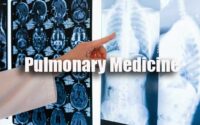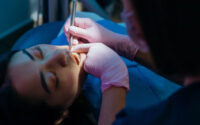Neurology MCQ
Neurology MCQ paper for the written examination is given below. Candidates who are looking for Neurology exam MCQ paper can find in this section. The applied candidates who are getting prepared for the Neurology can view this page for the Neurology Last Ten Years MCQ Papers. Download the Neurology MCQ & Solutions & make it as a reference for your exam preparation.

Take advantage of these Neurology MCQ Papers in a proper manner to get qualifying Marks. Last 5 years Neurology MCQ Papers provided here. Candidates who are applied for the above exam can check and download the Neurology MCQ Papers from here.
MCQ on Neurology
1. All of the following are risks associated with use of rivastigmine for the treatment of dementia, except
(1) physiologic dependence
(2) nausea and vomiting
(3) conduction blocks
(4) vivid dreams
2. Which of the following statements regarding West Nile neuroinvasive disease (WNND) is accurate?
(1) Cerebrospinal fluid analysis is often normal
(2) Steroids, if started early enough, hastens recovery
(3) Approximately 50% of patients with WNND do not survive the illness
(4) Abnormalities on MRI are best detected on flair and involve basal ganglia thalamus and cerebellum
3. All of the following are components of the DSM-V diagnostic criteria for major depressive disorder, EXCEPT
(1) persistence of depressive symptoms for a continuous period of at least 3 months
(2) diminished interest in most, if not all, activities most days
(3) feelings of worthlessness of excessive guilt
(4) recurrent thoughts of death or suicidal ideation
4. Which of the following tests evaluates primarily attention?
(1) Boston naming test
(2) Montreal cognitive assessment
(3) Spell word backwords
(4) Clock drawing
5. Which of the following medications is most likely to be beneficial in a patient with hepatic encephalopathy?
(1) Rifaximin
(2) Oral vancomycin
(3) Flumazenil
(4) Naloxone
6. Which of the following treatments/interventions has been shown to decrease the future risk of dementia due to Alzheimer disease or slow progression of disease?
(1) Daily physical exercise
(2) Daily use of partial NUDA-receptor antagonists (e.g, memantine)
(3) Daily use of cholinesterase inhibitors (e.g., donepezil)
(4) Dietary supplementation with turmeric
7. A 40-year-old woman with secondary progressive multiple sclerosis complains of urinary urgency. Which of the following is the most appropriate for an initial therapeutic trial?
(1) Botulinum toxin
(2) Darifenacin
(3) Muirabegren
(4) Oxybutynin CR
8. A 64-year old woman presents with a language deficit following a stroke. Her main deficit is impaired repetition. Fluency is minimally impaired with some paraphasic errors. Naming is mostly normal. Comprehension is intact. What is the classic localization of her deficit?
(1) Left posterior inferior frontal lobe
(2) Left thalamus
(3) Arcuate fasciculus
(4) Left caudate head and surrounding white matter
9. What is the mechanism of action of phenobarbital?
(1) Calcium channel blocker
(2) Sodium channel blocker
(3) NMDA Receptor
(4) By enhancing GABA
10. Which of the following medications used in the management of multiple sclerosis has been associated with a rebound increase in disease activity after discontinuation of treatment?
(1) Glatiramer acetate
(2) Interferen beta
(3) Natalizumab
(4) Teriflunomide
11. Tobacco alcohol amblyopia is a
(1) Centrocecal scotoma
(2) Quadrantinopia
(3) Hemianopia
(4) None of the above
12. Which of the following neurotransmitters is incorrectly paired with the amino acid it is synthesized from?
(1) Norepinephrine and tyrosine
(2) Serotonin and tryptophan
(3) GABA and aspartate
(4) Histamine and histidine
13. Optic neuritis and longitudinally extensive transverse myelitis are cardinal features of NMO. All of the syndromes below satisfy clinical criteria for neuromyelitis optica, except
(1) cerebellar vermis syndrome
(2) cerebral symptoms
(3) brainstem syndrome
(4) area postrema syndrome
14. What is the target antigen of NMO-IgG?
(1) Double-stranded DNA
(2) Aquaporin-4
(3) Leucine rich glioma inactivated (LGI1)
(4) Muscle specific kinase
15. What is the mechanism of action of Memantine?
(1) AMPA receptor antagonist
(2) Cholinesterase inhibitor
(3) NMDA receptor antagonist
(4) histone deacetylase inhibitor
16. All of the following are side effects of intravenous mannitol, except
(1) Renal failure
(2) Liver failure
(3) Rebound intracranial hypertension
(4) Hypernatremia
17. All of the following are true of lithium, EXCEPT
(1) The half-life of lithium allows for once daily dosing
(2) A practical disadvantage to lithium use in the bipolar population is its narrow therapeutic index
(3) Common side effects of lithium include tremor and weight gain
(4) Common side effects of lithium include hypothyroidism and polyuria
18. Which of the following presentations of multiple sclerosis (MS) affects men and women at similar rates?
(1) Primary-progressive MS
(2) Relapsing-remitting MS
(3) (1) and (2)
(4) None of the above
19. In restless leg syndrome all are true except
(1) It is most common movement disorder
(2) It is lifelong sensory-motor neurological disorder
(3) These patients do not have periodic leg movements
(4) Prevalence is greater in women
20. All of the following factors are well- recognized risk factors for the development of Alzheimer disease, except
(1) female gender
(2) age
(3) APOE4 allele
(4) occupation
| Practice Set | MCQs |
| Quiz | Questions and Answers |
21. Which of the following is true regarding varicella-zoster virus?
(1) Itis an enterovirus
(2) After primary infection the virus usually becomes latent in anterior horn cells
(3) Reactivation of the virus causes varicella (“chickenpox”)
(4) A decline in virus-specific cell-mediated immunity leads to reactivation
22. Which of the following drugs used in the disease-modifying treatment of multiple sclerosis has the best safety rating during pregnancy?
(1) Teriflunomide
(2) Fingolimod
(3) Dimethyl fumarate
(4) Glatiramer acetate
23. Which of the following antihypertensives has evidence supporting its use in migraine prevention?
(1) Atenolol
(2) Amlodipine
(3) Telmisartan
(4) Hydrochlorothiazide
24. Which one of the following medications causes slow inactivation of voltage gated sodium channel as a mechanism of antiepileptic action?
(1) Pregabalin
(2) Perampanel
(3) Lacosamide
(4) Clobazam
25. All of the following are signs/symptoms included in the diagnostic criteria for attention deficit hyperactivity disorder, EXCEPT
(1) often does not seem to listen when spoken to directly
(2) often avoids, dislikes, or is reluctant to engage in tasks that require sustained mental effort
(3) is often forgetful in daily activities
(4) improvement of symptoms with stimulant medication
26. All of the following life-style factors represent potentially reversible modifiers of dementia risk, EXCEPT
(1) midlife hypertension
(2) consumption of diet sodas
(3) smoking
(4) diabetes mellitus
27. Which of the following changes in CSF biomarkers best predicts cognitive | impairment in patients with Alzheimer disease?
(1) Decreases in amyloid-beta-42
(2) Increases in CSF tau proteins
(3) Increase in 14-3-3
(4) (1) and (2)
28. In about how many of patients with epilepsy first EEG is normal?
(1) 30%
(2) 40%
(3) 50%
(4) 60%
29. Which of the following medications is a good alternative to ibuprofen in handling both the headaches and the menstrual cramping in a woman with migraine attacks?
(1) Oxycodone
(2) Naproxen
(3) Acetaminophen
(4) Butalbital, acetaminophen, caffeine
30. You are asked to evaluate a 16-month old girl for seizures. She developed normally until she was 12 months old and then lost verbal and motor skills. Her mother describes frequent hand wringing and inconsolable crying. What is true of this child’s disorder?
(1) Autosomal dominant
(2) Autosemal recessive
(3) Occurs almost exclusively in females
(4) X-linked recessive !
31. A 7-year-old patient has episodes of uncontrollable laughter. She has history of early pubertal changes. In the last month, there have been new convulsive events. A brain MRI is done, given your strong clinical suspicion for which of the following?
(1) Cortical tubers
(2) Hypothalamic hamartoma
(3) Mesial temporal lobe sclerosis
(4) Multiple sclerosis
32. One type of congenital myasthenic syndrome is the slow channel syndrome. Slow channel” refers to which of the following?
(1) Prolonged open time of acetylcholine receptor channel
(2) Prolonged slow inactivation of nicotinic acetylcholine receptor
(3) Slow opening of acetylcholine receptor
(4) Slow opening of voltage-gated sodium channel
33. All of the following are required for a diagnosis of acute disseminated encephalomyelitis, EXCEPT
(1) fever encephalopathy, and multifocal presentation
(2) multifocal T2 lesions predominantly affecting white matter of both brain and spinal cord and great majority of them enhance
(3) CSF showing low sugar
(4) multifocal central nervous system event following exposure to virus or receipt of vaccine
34. A 19 year-old man presents for evaluation of abnormal behaviors in sleep. One to two times per week he will go to sleep in wake up in a different part of the house with no recollection of how he got there. Which of the following characteristics would favor a diagnosis of a NREM parasomnia over nocturnal seizures?
(1) Stereotyped events
(2) Distinct onset and offset
(3) Long duration (greater than 5 minutes)
(4) Exacerbation by sleep deprivation
35. Which of the following is the advantage of VNS over antiepileptic drugs?
(1) Causes hoarseness of voice
(2) Causes coughing
(3) It does not cause sleepiness, dizziness, cognitive dysfunction
(4) Causes worsening of obstructive sleep apnea
36. The posterior fontanel is formed by the junction of which sutures?
(1) Lambdoid and coronal
(2) Lambdoid and metopic
(3) Sagittal and coronal
(4) Sagittal and lambdoid
37. Which antiepileptic drug is not an appropriate choice when rapid onset of action is needed?
(1) Lamotrigine
(2) Oxcarbazepine
(3) Levitiracetam
(4) None of the above
38. A 6-year-old girl is referred to your clinic for nocturnal episodes. Which features frontal lobe seizures as the etiology of these events, rather than night terrors?
(1) Extremely —inconsolable — with thrashing movements and complete amnesia to the event
(2) Multiple family members have exhibited the same behavior
(3) Occurs multiple times per night, nearly every night
(4) Typically occurs 2 to 4 hours after sleep onset
39. Becker muscular dystrophy is distinguished from Duchenne muscular dystrophy by which of the following findings?
(1) Preserved ambulation beyond 15 years of age
(2) CK values under 5,000 IU/L
(3) Absence of cardiomyopathy
(4) Normal pulmonary function
40. Which of the following conditions shows a complete response to indomethacin?
(1) Cluster headache
(2) Migraines
(3) Hypnic headache
(4) Paroxysmal hemicrania
41. Deficiency of copper classically leads to
(1) myelopathy or myeloneuropathy
(2) encephalopathy
(3) myopathy
(4) None of the above
42. Which of the following is TRUE about short-lasting unilateral neuralgiform headache attacks with conjunctival injection and lacrimation (SUNCT)?
(1) The pain most commonly involves the second division of the trigeminal nerve (V2)
(2) Attacks can be triggered by alcohol consumption
(3) It is highly responsive to treatment with indomethacin
(4) Secondary forms are seen with posterior fossa and pituitary lesions
43. At what age are cafe-au-lait patches typically visible and sufficient in number to meet the diagnostic criteria for neurofibromatosis?
(1) At birth
(2) By age six years
(3) By the end of puberty
(4) By age 25 years
44. Which of the following skin findings is not associated with tuberous sclerosis?
(1) Ash-leaf spots
(2) Cafe Au lait spots
(3) Angiofibromas of the nail beds
(4) A rubbery patch of skin over lower trunk
45. Common comorbidities requiring multi-disciplinary care in Duchenne muscular dystrophy include all of the following except
(1) impaired pulmonary function
(2) cardiomyopathy
(3) scoliosis
(4) seizures



